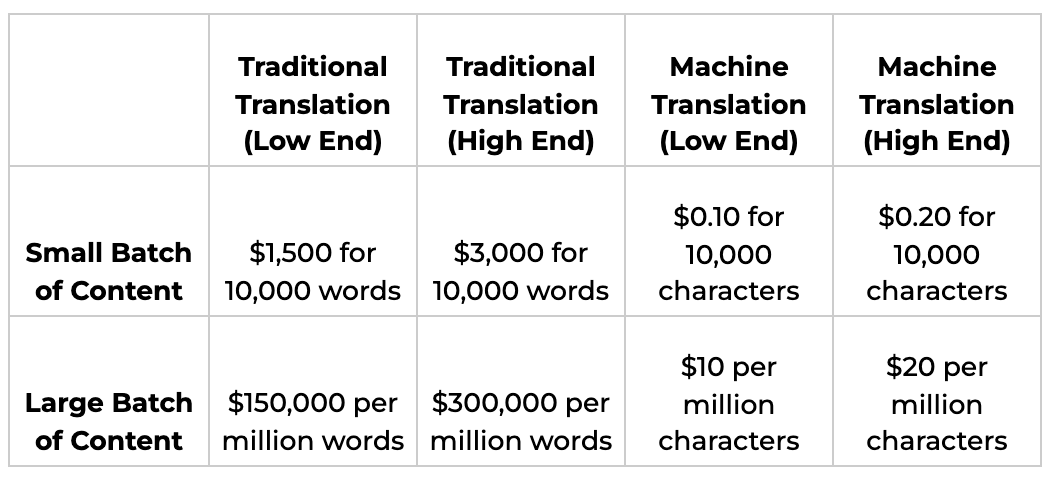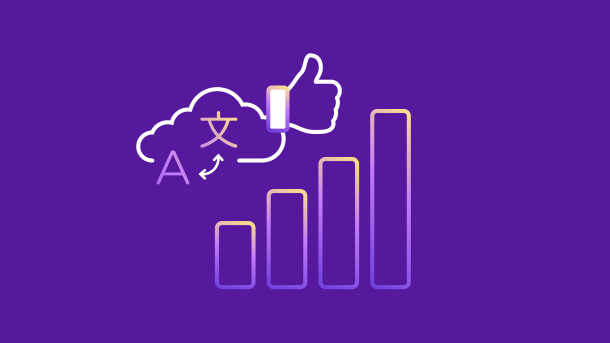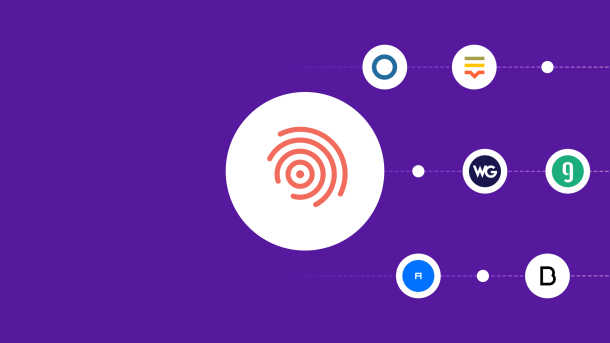In 2022, the market size of the translation services industry reached $9 billion in the US alone. Clearly, many companies are spending big bucks to make their content accessible in different languages. But, zooming in on that multi-billion dollar figure, what are the usual rates for translation projects? The answer is crucial to managing your localization budget effectively and maximizing the impact of your efforts.
How are translation rates calculated?
Translation rates are most often calculated on a per-word basis, sometimes with a minimum charge. Since it’s based on the word count of the source text, pre-edits can be helpful to trim unnecessary words and reduce translation costs.
While less common, you may sometimes come across the following pricing structures:
- Per-page pricing for documents that are standardized enough to accurately estimate the time and effort required
- Hourly rates for services complementary to translation, such as quality assurance and machine translation post-editing (MTPE)
However, since per-word rates are the translation industry standard, we’ll reference that structure going forward.
Typical rates for professional translation services
The exact cost can vary based on a number of factors, which we’ll discuss later. But human translation usually lands in the ballpark of $0.15 to $0.30 per word. Where do Smartling’s translation services fall within that range? Premium Translation—done by 100% native speakers and subject matter experts—costs between $0.17 and $0.20 per word, depending on the language.
Traditional Translation, on the other hand, costs $0.12 to $0.14 per word. Both are delivered with guaranteed multidimensional quality metrics (MQM) scores of 98. In the rare even that a translation isn’t up to par, we fix it at no cost, ensuring that you always receive high-quality translations.
How does the cost of machine translation (MT) compare?
Typical machine translation pricing
Machine translation is known for its ability to translate millions of words in seconds and for a fraction of the cost of human translation. To illustrate, look at the pricing for standard translation from some of the most popular machine translation engines.
- Google Cloud Translation API: $0.000020 per character
- Amazon Translate: $0.000015 per character
- Microsoft Translator: $0.000010 per character
Among others, you can integrate any of the above engines with Smartling’s Neural Machine Translation Hub. This Hub is our cloud-based, multi-machine translation engine that uses AI to auto-select the best MT engine for your language pair and content.
The result is instant delivery of up to 350% higher quality translations for as little as $0.005 to $0.0012 per word. For around the same cost, you can even use a trained MT engine to translate content in your brand style and tone, no matter the content type.
Example translation costs for traditional or machine translation
Let’s put the price ranges we’ve covered into perspective. Here are some low- and high-end totals for two translation projects with different numbers of words.

These are just estimates, of course, and the final cost of a translation project depends on a variety of things.
6 factors that influence translation cost
We’ve established that word count or document length is an influencing factor since per-word rates are so common. What other factors impact translation costs?
- Content type: Technical or jargon-heavy content takes more time, effort, and skill to translate than non-technical texts. You’ll see this reflected in what language service providers (LSPs) charge.
- Service type: Do you need translation only (TO), translation and editing (TE), or translation, editing, and proofreading (TEP)? Additionally, do you need desktop publishing (DTP) to get marketing materials, product packaging, and the imagery associated with them ready for the world? Pricing will vary accordingly.
- Language demand: In-demand languages like Spanish and French have lower translation fees, particularly when translated from a common source language like English. This is partially because there are many qualified translators available, but the opposite applies too. Less common languages like Quechua and Yoruba often have higher costs. Especially if a translation company has to outsource your project to a freelance translator or translation agency due to a lack of qualified translators.
- Language pairs: Say you have an uncommon language combination, like Arabic to Mandarin Chinese. Both the source language and target language have different dialects, characters, sentence structures, and so on. Plus, if English is used as an intermediary language, there will be yet another layer of complexity. So, the cost of translation will be higher to account for the level of skill and time required.
- Timeframe: A rush job is likely to cost you more, especially if your project poses challenges, such as a tricky language pair.
- Cost of living: Translators based in countries or regions where the cost of living is lower generally charge less than those in more expensive areas.
Other factors can also influence how much you’ll spend. Think of a certified translation, for example. This is a signed statement from the LSP confirming that a text was translated accurately from the source document. You may need one for a business contract, service agreement, or other legal document. Given the importance of the source document, you can expect to pay a higher fee.
Additionally, translation memory can have a big impact on how much your translation services cost. Translation memory enables translators to reuse previously approved translations to keep your brand voice and terminology consistent, and prevent you from paying for the same translations repeatedly.
Translation services are an investment, not an expense
We’ve used the term “translation cost” a lot. While translation does have costs—time and money included—it’s ultimately more of an investment than an expense.
Proven translation services and software can get you a return on investment that far outweighs what you put into your projects. Case in point: Customers who use Smartling’s translation services enjoy 70% more website conversions while also saving 20% on translation costs. They also realize those benefits sooner, thanks to streamlined translation processes and faster turnaround times. They’re able to publish translated content 52% faster.
Our translation plans also help control translation costs. You can choose just the right option for your current localization needs and budget, but there’s also room to scale as needed.
Whether you need cost-effective, high-ROI services or software—or both—Smartling has a solution to match. To see how you can use the platform to optimize your translation efforts and make the most of your localization budget, check out our 5-minute, on-demand demo. If you have questions afterward or want a more in-depth, personalized demo, give our team a shout and we’ll be glad to help!




